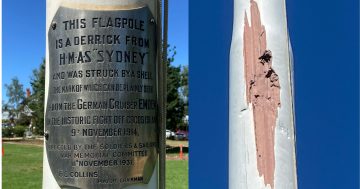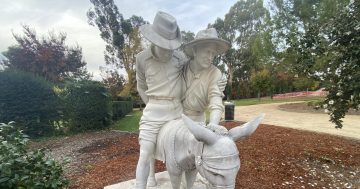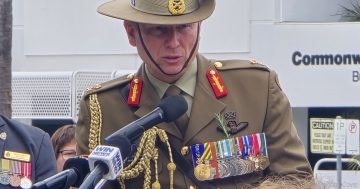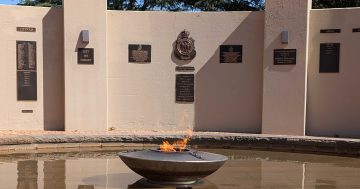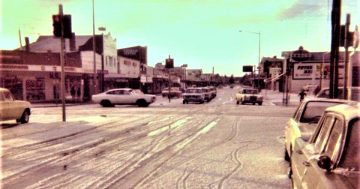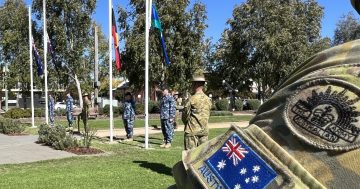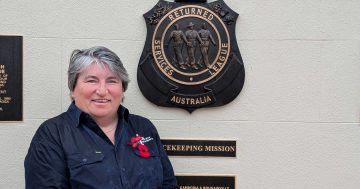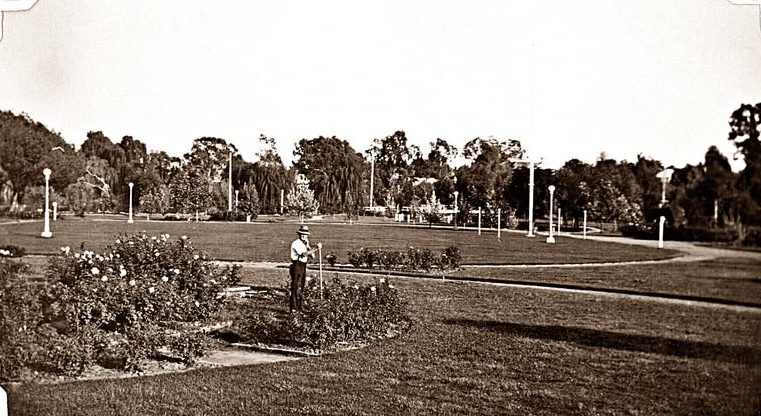
The early days of Wagga’s Victory Memorial Gardens. Photo: L. G. Watt.
As Wagga prepares for Tuesday’s Remembrance Day commemorations at the Victory Memorial Gardens we are looking back to the bumpy road that led to the establishment of the city’s iconic botanical centerpiece. As the guns fell silent on 11 November 1918 and the world breathed a sigh of relief, Australian soldiers and civilians began rebuilding their lives and considering how they would honour the fallen and support those who had returned.
Wagga’s citizens agreed a memorial should be established but they were divided on its form. Proposals included a granite pillar like the one erected in Manly in 1916, a children’s wing for the hospital and the addition of a second storey to Wagga’s undersized Town Hall. The Wagga sub-branch of the Returned Sailors and Soldiers League was clear in its desire to support the veterans first with a dedicated hall or community space.
A referendum was held in October 1919 and Wagga ratepayers overwhelmingly voted in favour of a “monument similar to the one at Manly containing an honour roll, to cost about £1500, surplus to be expended for the education of children of fallen soldiers”.
RSSILA members felt slighted and branch president Henry Gissing warned that a monument would be a waste of public money and of little use to veterans who had no dedicated building in which to meet. He told The Daily Advertiser that a granite column was in some ways “only for the rising generation and the upkeep of the national spirit”.
Nevertheless, a committee was formed, money was raised by public subscription and the site of the old police barracks and paddocks on Morrow Street was selected.
Meetings of the Wagga and District Soldiers Memorial Fund Committee were fiery and there was a push to compromise and deliver both a memorial to the dead and a public hall for living veterans.
In September 1922, the cenotaph bearing the names of 202 soldiers from Wagga who had died in the war was unveiled on the corner of Baylis and Morrow streets by local-son Brigadier-General Thomas Blamey.
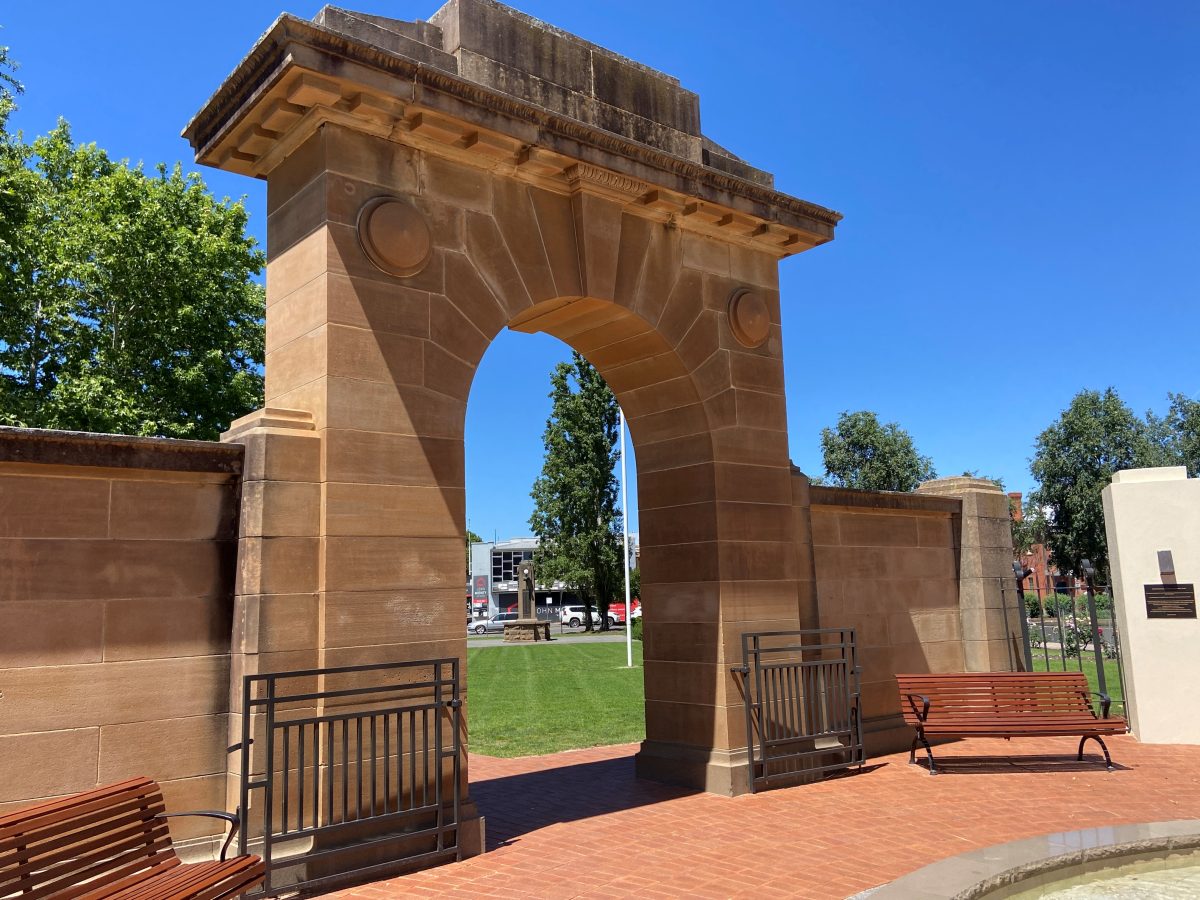
Looking back through Wagga’s Memorial Arch to the cenotaph. Photo: Chris Roe.
The monument had come in under budget at a cost of £800 pounds which left £2000 that could be put towards a meeting place for veterans. Mayor Collins headed up the Memorial Committee and proposed that council take out a £4000 loan on top of the remaining funds to remodel the city’s Town Hall to include an honour role and additional rooms for returned soldiers.
But once again, the committee struggled to secure public support. Local ratepayers challenged the idea of saddling the municipal council with debt and the proposal was rejected in a second public referendum held in 1923.
With their calls for a memorial hall shut down again, the RSSILA’s new branch president D. T. Byrnes put forward a new proposal that included “a garden to be known as a War Memorial Garden, on the foreshores of the Wollundry Lagoon between Baylis and Trail streets”.
Mayor Collins and the Memorial Committee opposed the idea, continuing to advocate for a town hall upgrade and backed another proposal for a memorial arch to be erected near the cenotaph.
The fiery Byrnes replaced Collins as mayor the following year and in a speech on Anzac Day 1925, the new “Digger Mayor” lamented the ongoing feud and warned that an overpriced arch would “look out into a wilderness”. At a public meeting the following day he threatened to obtain a short act of parliament to authorise the expenditure of money on the gardens.
A compromise was reached later that year to include an imposing arch at the entrance to the proposed gardens and a separate Victory Memorial Gardens Committee led by Byrnes raised £1300 in just five weeks.
The next hurdle proved to be red tape, as tedious negotiations began with the police department to remove the old barracks buildings and provide them with a new location on Tarcutta Street.
In 1926, Collins had reclaimed the mayoral chain and his Memorial Committee kicked off foundational work on the arch. But Byrnes and his Gardens Committee opposed the location and launched legal action to halt the work.
After another months-long stalemate the work was finally allowed to continue and the Memorial Arch was eventually completed at a cost of £1700 pounds. The imposing structure was officially unveiled on Anzac Day 1927 by General CF Cox in front of a record crowd.
Attention now shifted to the long awaited Memorial Gardens and Thomas Kerr from the Royal Botanical Gardens won a public design competition and construction began in April 1928.
The gardens were formally dedicated on Anzac Day 1931 with Collins dedicating them “to the perpetual memory of those who left this town and district, at the call of the Empire and undertake that they will be guarded and cherished for the sacred objects for which they were founded”.







